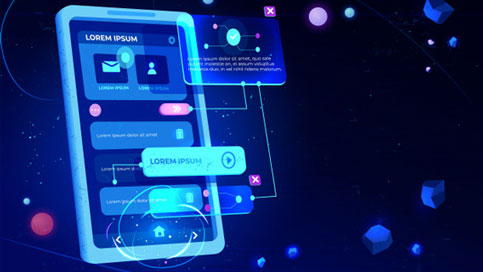App Development
App development refers to the process of creating software applications that run on mobile devices, such as smartphones and tablets. These applications, commonly known as mobile apps, serve various purposes, from entertainment and communication to productivity and e-commerce.
Planning and Strategy: App development begins with defining the app’s purpose, target audience, and desired features. Planning and strategy involve market research, competitor analysis, and creating a roadmap for the app’s development.
User Experience (UX) Design: UX design focuses on creating an intuitive and user-friendly interface for the app. This involves wireframing, prototyping, and designing the visual elements, navigation, and interactions to ensure a seamless user experience.

App Development Platforms: Mobile apps can be developed for different platforms, such as iOS (Apple) or Android (Google). Developers use programming languages and development frameworks specific to each platform, such as Swift or Objective-C for iOS and Java or Kotlin for Android.
Front-end and Back-end Development: Front-end development involves implementing the user interface and functionality visible to the app’s users. Back-end development focuses on building the server-side infrastructure, databases, APIs, and other components that support the app’s functionality.
Testing and Quality Assurance: Rigorous testing is essential to ensure the app functions properly, is free of bugs, and provides a smooth user experience. Testing may involve functional testing, usability testing, performance testing, and compatibility testing on different devices and platforms.
Deployment and Distribution: Once the app is developed and tested, it is prepared for deployment. For iOS apps, this involves submitting the app to the Apple App Store for review and approval. Android apps can be distributed through the Google Play Store or other alternative app stores.
